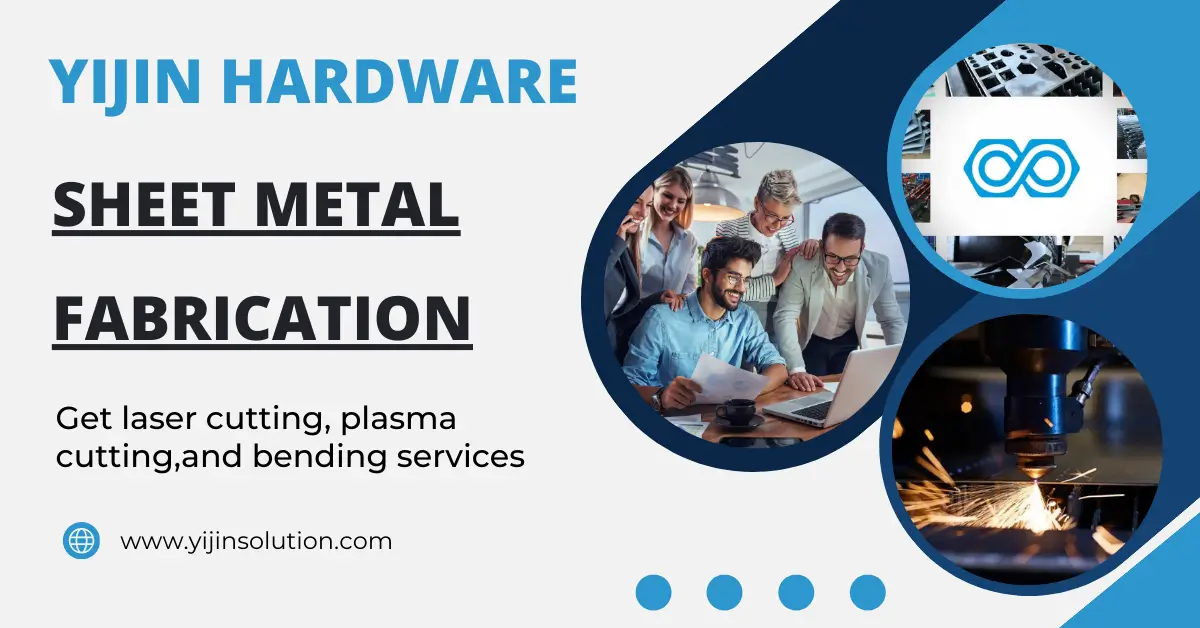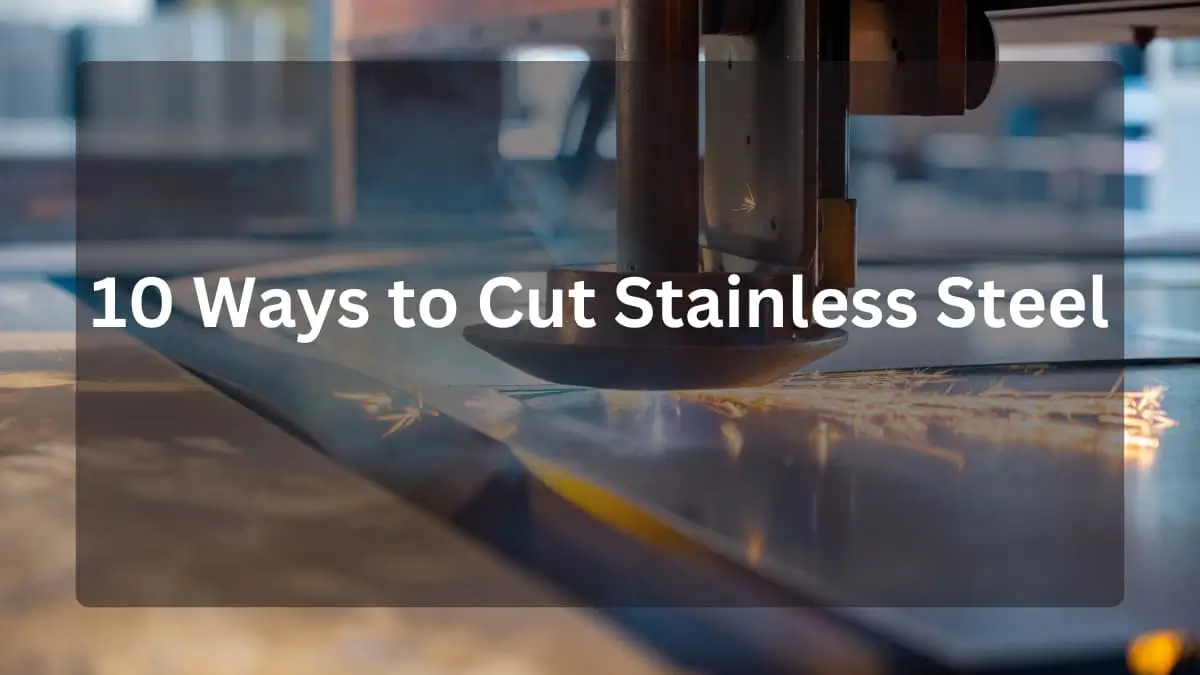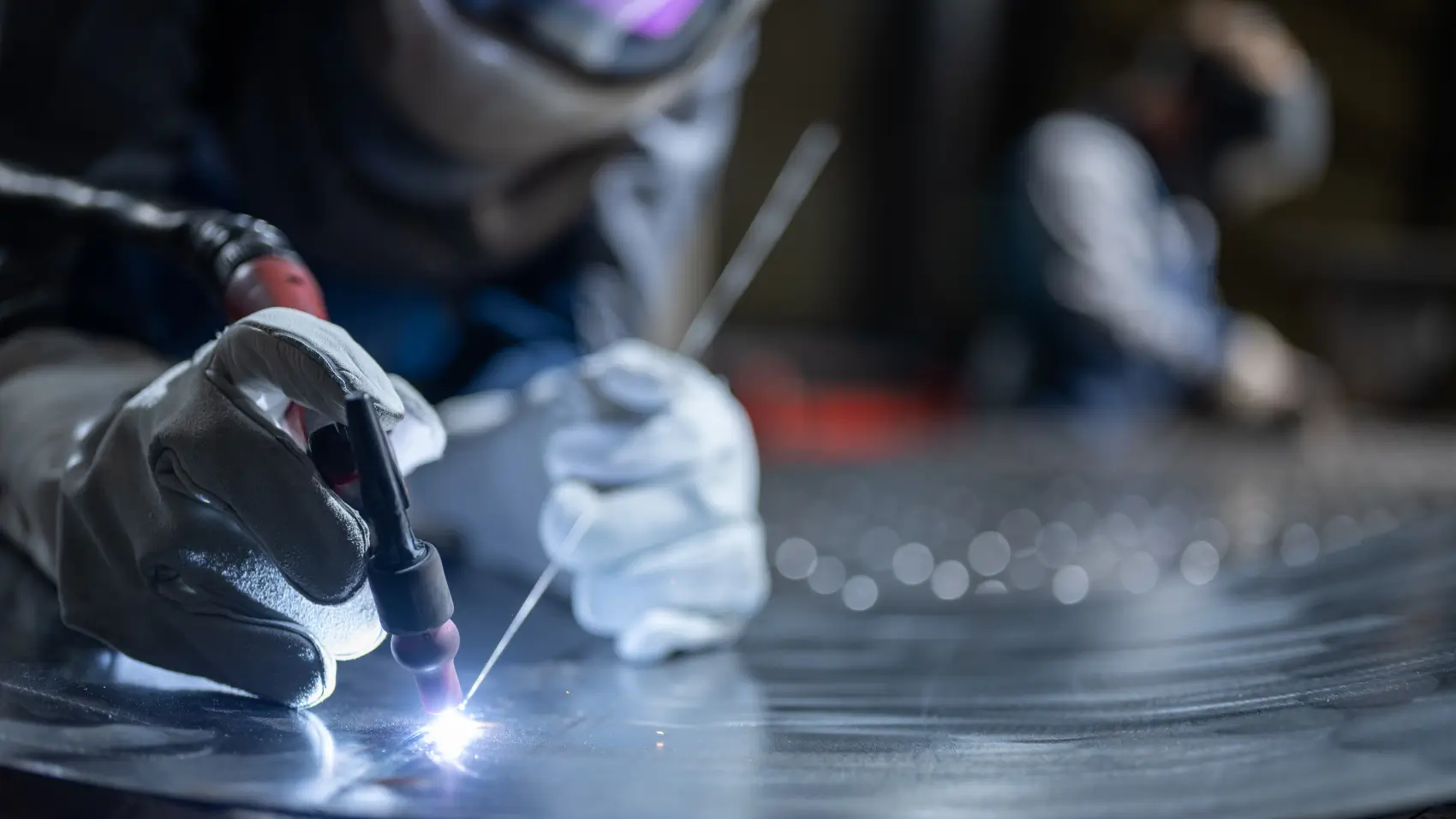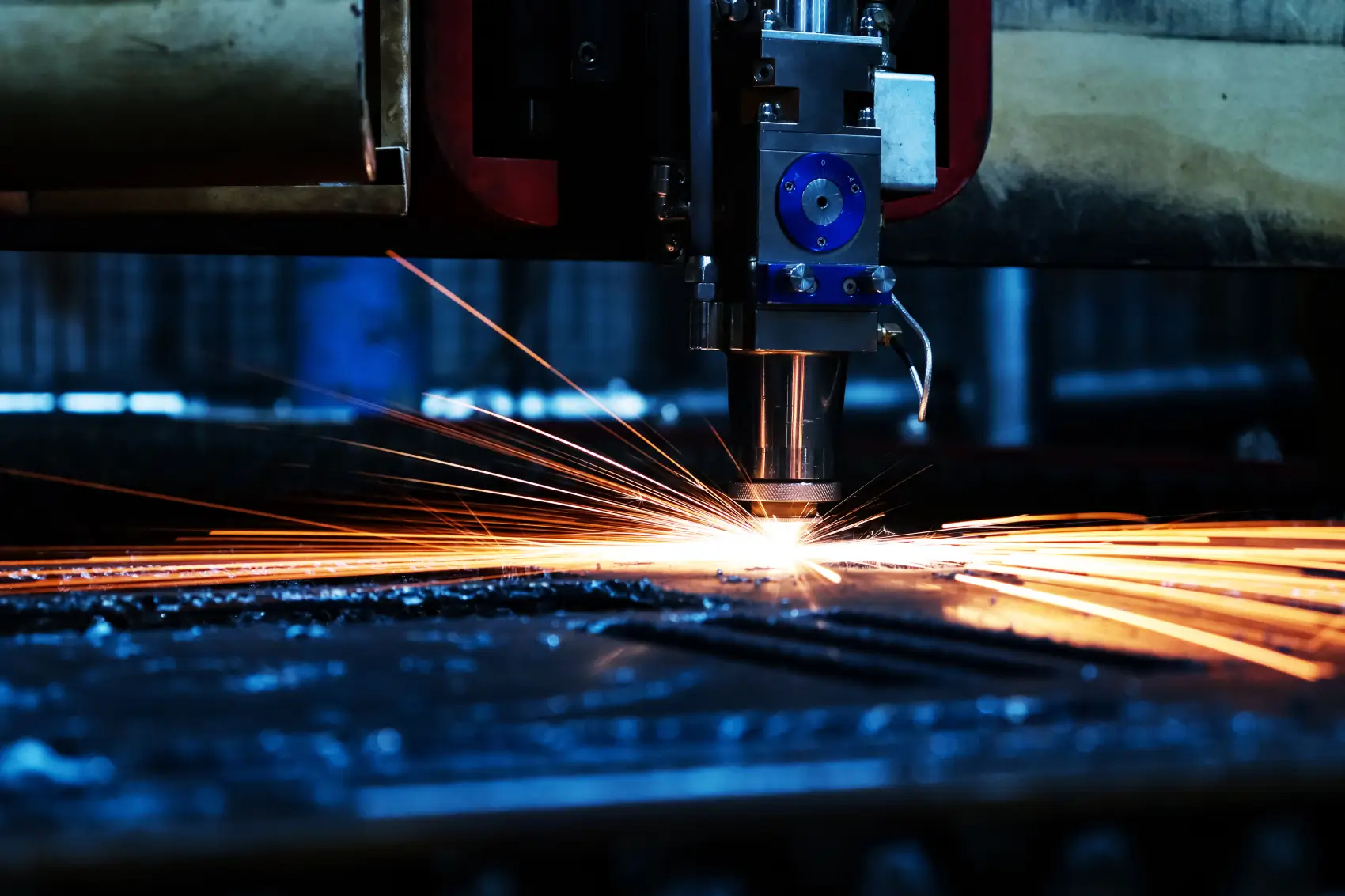Sheet metal fabrication is the main part of modern manufacturing. Most of the metal fabricated products are made of this process. For instance, take example of your home refrigerator; it has 0.7-1.0 mm thick steel sheets. Similarly, its shell has 0.7-1.2 mm thick sheet. Now, look at fax or copy machines which use 0.5-1.0 mm thinner sheets for internal components.
One of the best features of sheet metal fabrication is its adaptability. It means incorporating relevant process; sheet metal can be used in different fields. Steel furniture, for instance, range from 0.8-2.0 mm in thickness. Simultaneously, vending machines which need more resistance require 1.5-2.0 mm thicker sheets. So basically, for your understanding, sheet metal parts are everywhere around us.
The purpose of giving basic examples was to clear the fundamental concepts for beginners. Now, we shall move further to understand the basic definition of sheet metal, its process, and its applications.
What is sheet metal fabrication?
Sheet metal fabrication is a process of making three dimensional products. In this process, the manufacturers use aluminum or steel. But here are two major techniques of sheet metal fabrication:
- Thermal Cutting
- Mechanical Cutting
Thermal and mechanical cutting methods are divided into further categories. We shall briefly discuss each below.
Types of Metal Fabrication Processes
In sheet metal fabrication, the first step is to cut the sheet in desired shape. This is done on various ways; such as:
CAD Design
You must have read role of CAD software in manufacturing CNC machining custom parts. This is the same part which sheet metal fabrication companies follow. A Computer Aided Design is software which helps to design a particular shape. Previously, metal cutting was done manually. However, now precision cutting involves CAD models to get the best results.
Read More: How To Cut Stainless Steel?
Thermal Cutting
Thermal cutting involves further two steps:
1: Laser Cutting
2: Plasma Cutting
1.Laser Cutting
In laser cutting, a focused laser beam melts and vaporizes the metal. This process leaves a high precision cut. This method is best for complex designs and perfectly fit with thin to moderate sheets up to ¼ inch [6.35 mm] for steel.
In this scenario, a study held by University at Buffalo, The State University of New York] in 2020, states that laser cutting can reach dimensional tolerances of ± 0.004 inches (0.10 mm) for steel.
2.Plasma Cutting
In plasma cutting, a superheated plasma torch cuts through the metal. This torch can effectively handle thicker sheets (up to 1 inch [25.4 mm] for steel).
Mechanical Cutting
1.Shearing
Shearing makes straight cuts. It uses a proper guide and with sharp blades to slice through sheet metal. Great for simple cuts on thinner sheets (up to ¼ inch[6.35 mm] ).
2.Punching
In punch, a punch and die is incorporated which makes holes. In this method, punch and die presses down the sheet and inserts into a die to bring specific shape.
3.Blanking
Blanking incorporates a punch and die set up to generate several similar parts at one pass from sheet metal. For the high-volume production, this is one of the cost-effective options.
4.Sawing
To cut thicker sheets (greater than ¼ inch [6.35 mm]), saws, such as a bandsaw or abrasive blades are best to make straight lines or curved shapes.
Sheet Metal Forming Techniques
After cutting the material, the next step is improving the shape. For shape processing, here are some further techniques:
1.Bending for Precision
In this techniques, sheet metal fabricators use press brakes machines to bend the sheet metal in a specific angle. Precision and bending angle are crucial to achieve tight tolerance often within +/- 1 degree).
2.Rolling for Curves
In this technique, rolling machines incorporates rollers to gradually bend the sheet metal into a curved shape. With this technique, you can make cylinders, cones, and other curved parts.
3.High-Volume Shaping
You can say it is stamping for mass production. It uses a high-pressure press with a forming die make complex shapes. High-volume shaping is the best technique for common items such as appliance parts and electronic components.
Sheet Metal Joining Techniques
As soon as you have cut the sheet metal and shaped it, now it is time for assembling. In this process, joining technique plays a decisive role. Below, we are going to explore most common methods for joining in sheet metal fabrication.
Welding Techniques
Welding fuses two pieces of metal together using intense heat. This connection is as stronger as the pure metal itself. Here are some popular welding techniques incorporated in sheet metal fabrication:
Arc Welding:
In this method, an electric arc creates heats for welding. Generally, it is an electrode. It melts the metal and fills the gap between the two metal pieces. There are different types of arc welding for sheet metal, such as:
- Metal Inert Gas (MIG) welding
- Tungsten Inert Gas (TIG) welding
1.Spot Welding
In spot welding, a short burst technique is used to make small, localized welds at specific points. It is one of the best methods for joining overlapping sheets of metal. The example of such welding is car bodies and electronic components.
2.Rivet Joining
In cases where you need a permanent joint, but not necessarily a fused one, riveting provides a strong and reliable solution. It is a process of inserting a round and cylindrical metal through holes in metal pieces and securing it on the other side by mechanically expanding it. The following are the steps:
- Take the two metal pieces to be joined and drill clean holes in them.
- Insert the rivet in one of the metal pieces and position the other on top of it. Make sure they fit correctly so that you do not have too tight or too loose rivet.
Rivets are available in various sizes and materials like aluminum, steel, and even copper. They offer several advantages, including:
- Strong and reliable joints
- Simple and fast installation
- No need for high heat
- Visually appealing exposed rivet head
3.Bolting
Bolting is used to join different sheet metal pieces. This method is carried during assembly or reassembly of the parts. In this method, metal fabricators use a clamped joint using a bolt and a nut. The bolt goes through the pre-drilled holes. Simultaneously, a washer prevents self-loosening of the nut.
We explain the entire bolting process in two steps:
- Drilling of holes
- Positioning of parts
Surface Finishes for Sheet Metal Fabrication
Surface finishing improves the looks and performance of the final product. You can say, surface finishing is the makeup process of finished parts. There are different finishing techniques. We shall discuss each below.
Powder Coating
- First, you will clean the sheet metal. Similarly, prepping is essential to maintain a good bond with the powder coating.
- The powder carries finely ground pigment and resin particles. They are electrostatically charged. It transfers the powder particles a positive or negative electrical charge.
- The cleaned sheet metal is then grounded. The oppositely charged powder particles are attracted to the metal surface.
- The coated sheet metal is then baked in an oven at high temperatures. This heat melts the resin particles in the powder. This procedure results in flowing and form a smooth, hard-wearing finish.
Bead Blasting
Bead blasting is best for more subdued and textured finish. Here’s the process:
- Tiny abrasive beads typically made of glass or ceramic are the main elements of blasting media. The size and type of bead impact the final texture of the surface finish.
- The abrasive media is propelled at high pressure through a nozzle. This procedure generates a blasting stream. Finally, it impacts the sheet metal surface.
- The bead blasting process removes a thin layer of material from the metal surface. Ultimately, it generates a matte finish with a slightly rough texture.
Brushing
Brushing adds sophistication to the final product. This surface finishing technique improves the appearance of the parts. Here are brushing steps:
Brushing Techniques:
- There are two main brushing techniques: mechanical brushing and brushing with abrasives.
- Mechanical brushing incorporates a wire brush. It makes fine, parallel lines on the metal surface.
- Brushing with abrasives involves applying a paste to the metal. Later, we buff it with a polishing tool.
Electroplating
Electroplating is an interesting surface finishing technique. Here, a thin layer of metal is applied to another metal. Let’s read the steps below:
- Sheet metal fabricators clean and degrease the sheet metal. It is to ensure a good electrical connection.
- Thesheet metal goes into an electrolyte (it is a solution). This solution contains dissolved metal ions of the plating material.
- An electrical current passes through the solution. Thus, the sheet metal can be considered as the cathode or negative electrode, while the other metal plate will be the anode or positive electrode.
- The electricity makes the metal ions to move towards the negatively charged sheet metal commonly known as the cathode. These ions are then settled on the surface of the sheet metal in the form of a layer of the metal.
Compatible Materials for Sheet Metal Fabrication
Sheet metal fabrication is not an all-rounder choice. It uses a range of materials to make products with numerous properties. The choice of material also impacts the performance and entire project. So let’s discuss prominent materials used in sheet metal fabrication.
Stainless Steel
Stainless steel is not only corrosion resistant but also a hard material. It has a natural surface of chromium oxide which protects steel from corrosion. Moreover, it can bear significant loads. Simultaneously, it is easy to clean and maintain.
Applications:
- Refrigerators, ovens, sink
- Cladding, railing
- Exhaust systems, trim components)
- Surgical instruments, sterilization trays
- Tanks, conveyors
Aluminum
Aluminum is known for its lightweight elements. It also secures the part surface with its protective oxide layer. In addition, its efficiency accelerates in non-acidic environment. Furthermore, aluminum is good conductor of heat and electricity.
Applications:
- Aircraft skins, fuselage panels
- Car Body panels, radiators
- Roofing, siding
- Food and beverage cans
- Heat sinks, enclosures
Copper
Copper along with its excellent electrical conductivity, is highly flexible material. You can easily design copper in complex shapes. Generally, people use aluminum for heat exchangers and heat sinks. Moreover, it is naturally anti-microbial. It means copper is a good material for touch surfaces.
Applications:
- Electrical wiring
- Plumbing pipes and fittings
- Heat sinks and heat exchangers
Designs for Sheet Metal Fabrication
In sheet metal fabrication, design has an integral position. No doubt, material selection, and choice of process has its advantages but if you do not have the right design, entire effort will be wasted. So in the following section, we are going to read some technical details including wall thickness, hole and slot placement, and bend allowances.
Wall Thickness
The wall thickness in your sheet metal part is crucial for its strength, weight, cost, and ease of formation. Thickness also impacts formability—how easily the sheet metal bends. As thick materials are more difficult to bend, their design requirements are stringent.
Common sheet metal thicknesses are measured in:
- Thousandths of an inch (mils):
(e.g., 0.036 inches = 36 mils) - Millimeters (mm):
(e.g., 0.8 mm)
General recommendations:
- For thinner applications:
036 inches (0.9 mm) to 0.074 inches (1.9 mm) - For moderate-duty applications:
090 inches (2.3 mm) to 0.125 inches (3.2 mm)
- For heavy-duty applications:
188 inches (4.8 mm) and above
Holes and Slot Orientation
Sheet metal fabrication gives life to metal sheets. How? It transforms metal sheets into 3D shapes. SO this is the key design process which helps you to make unlimited numbers of products in limited time. Subsequently, it is also affordable.
Bend Allowance and Deduction
With bending sheet metals, you can make different angles and shapes. But, you must remember that, wrong bending can also impact the strength of the part. You can fix this issue with bend allowance. It means the extra material a sheet metal part requires to get a particular strength.
You can calculate the Bend allowance with the following formula:
- Bend Allowance (BA) = Material Thickness (MT) x PI (π) x Factor (F)
Bend Deduction:
As the name suggests, it is the amount of material, you remove from inside the sheet metal part. It helps in avoiding splitting the sheet.
Bend deduction is calculated with the following formula:
- Bend Deduction (BD) = Material Thickness (MT) x Neutral Radius (NR)
Best Sheet Metal Fabrication Services at Yijin Hardware
Yijin Hardware is one of the leading sheet metal fabrication companies in the world. You get a full-range of sheet metal fabrications services with all popular materials. In addition, a wide range of surface finishes allow you to order your arts at one place.
Explore More:
Sheet Metal Fabrication Companies In China
Final Words
Sheet metal fabrication is an excellent choice to make low-cost custom parts with higher precision. However, you must know the basic principles of selecting right material and good design. If you are a beginner then a professional metal fabricator can assist you to make a right decision.
FAQs
What are the three 3 types of metal fabrication?
The three major types of sheet metal fabrication are following:
- Casting– A molten metal is inserted into the mold cavity to get the desired shape
- Forging– This is an old technique in which a hammer is used to give shape to the metal
- Machining– Pre-formed metal pieces are processed with the CNC machines such as CNC mills and laths.
What does a sheet metal fabricator do?
Sheet metal fabrication can perform several functions. But the main role is defined as follows:
- Cutting
- Bending
- Joining
- Finishing
What is the process of metal fabrication?
The process of the metal fabrication involves 7 steps:
- Design and Planning
- Material Selection
- Cutting
- Forming and Shaping
- Joining
- Finishing
- Quality Control
 Call Us Today! (+86) 188-2253-7569
Call Us Today! (+86) 188-2253-7569



